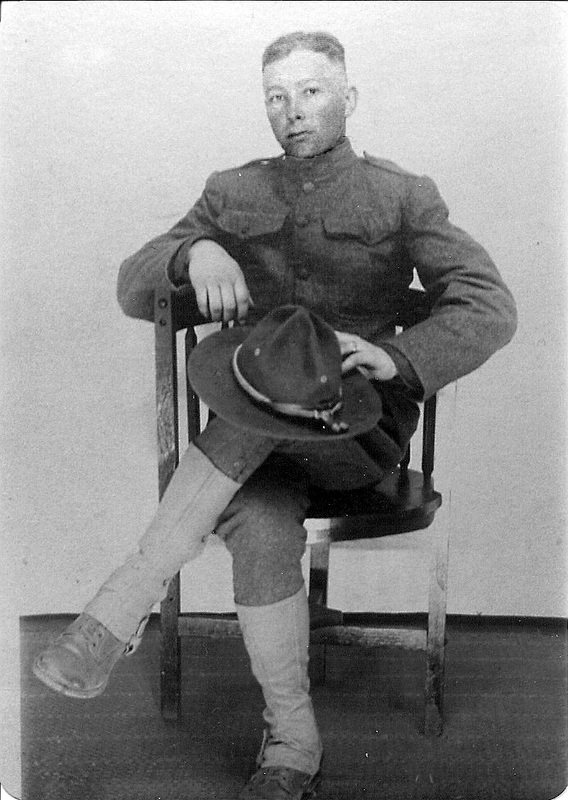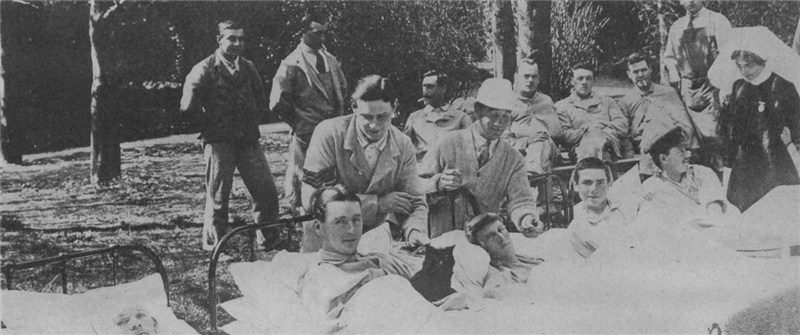During World War I thousands of young American men arrived in France as part of the AEF, the American Expeditionary Force. Although the boys who went "Over There" were called "Yanks" or "Sammies" (from 'Uncle Sam'), their most popular nickname was "Doughboys," a name that may have come from the adobe dust that covered marching foot soldiers involved in American military operations on the Mexican border in 1916. My grandfather was one of these doughboys.
There were Americans in France even before America entered the war. Many adventurous and idealistic young men, among them Ernest Hemingway, John Dos Passos, Julian Green, William Seabrook, E. E. Cummings, and Dashiell Hammett, served as ambulance drivers attached to the French forces before the United States entered the war. Many of these men, both adventurers and regular doughboys, became enamored with France. “If you are lucky enough to have lived in Paris as a young man, then wherever you go for the rest of your life it stays with you, for Paris is a moveable feast,” Hemingway wrote decades after having discovered the adventure of the city in 1918 at the age of 19. Some, like a character in Code: Elephants on the Moon, stayed to recuperate from wounds (there are some great photos of them, like the one below, at http://www.firstworldwar.com/photos/medical.htm).
After the war, some of the AEF found that going home and settling down wasn't easy. A popular song of the period asked "how ya gonna keep 'em down on the farm after they've seen Paree?" It was a valid question. Many disliked postwar American culture, seeing its social mores as moralistic, standardized, and vulgarized. Others felt that America had become a civilization of businessmen devoted to the worship of materialism. To them France represented ancient wisdom, history and refinement.
Because it offered a cultural environment free of the racial obsessions of American society, France also appealed to African-Americans. Writer Richard Wright, entertainer Josephine Baker, and jazz musicians Arthur Briggs, Benny Carter, and Dexter Gordon were a few of the prominent African-Americans who found a home in France after World War I.
Eventually, though, Americans began to leave Paris. Some, like Hemingway, were addicted to the excitement of war and found even postwar France too tame. They left for other conflicts, most notably the Spanish Civil War, where Americans volunteered as soldiers, technicians, medical personnel and aviators in the Abraham Lincoln Brigade. Approximately 2,800 American volunteers fought for the Spanish Republicans against Franco and the Spanish Nationalist. Between 750 and 800 died. Other Americans in France got homesick, changed their minds about France and returned to the States.
France itself was changing. In the 1930s France was rocked by the same extreme social tensions and class warfare that brought Hitler to power in January 1933. A year later, in February 1934, several thousand fascists and Royalists mobilized and brought down the French government. They accused Jews, communists, and foreigners, including Americans, of being mentally deficient and culturally detrimental to France. As the war drew nearer, Americans fled France. After the German invasion, a considerable number of the French people backed the Vichy regime and collaborated with the Nazis.
There are no official numbers available for how many Americans live in France today, but estimates near 100,000. Nearly three million Americans vacation or visit France every year. My family and I were five of the Americans who visited in 2005, and that visit led to Code: Elephants on the Moon.



